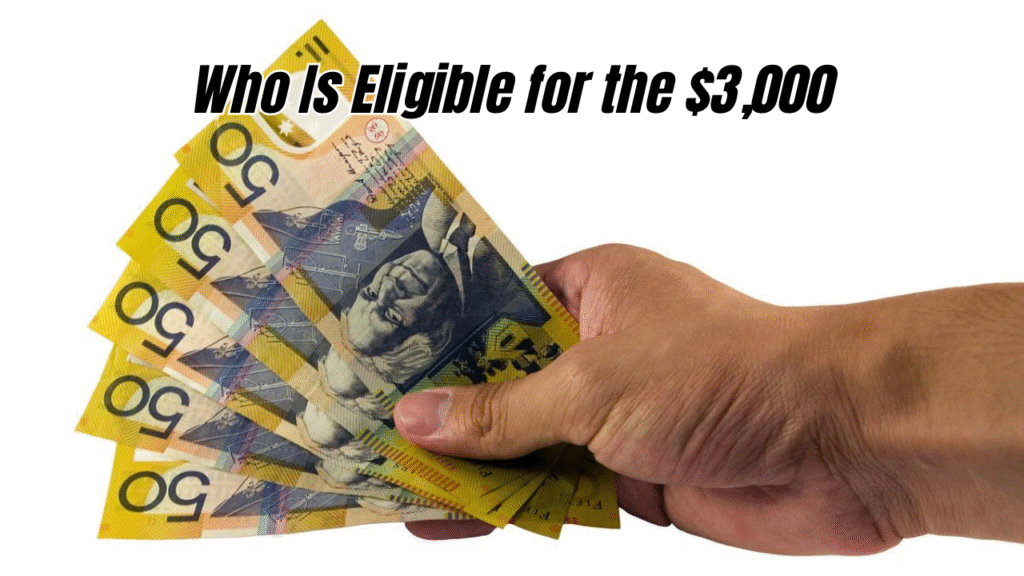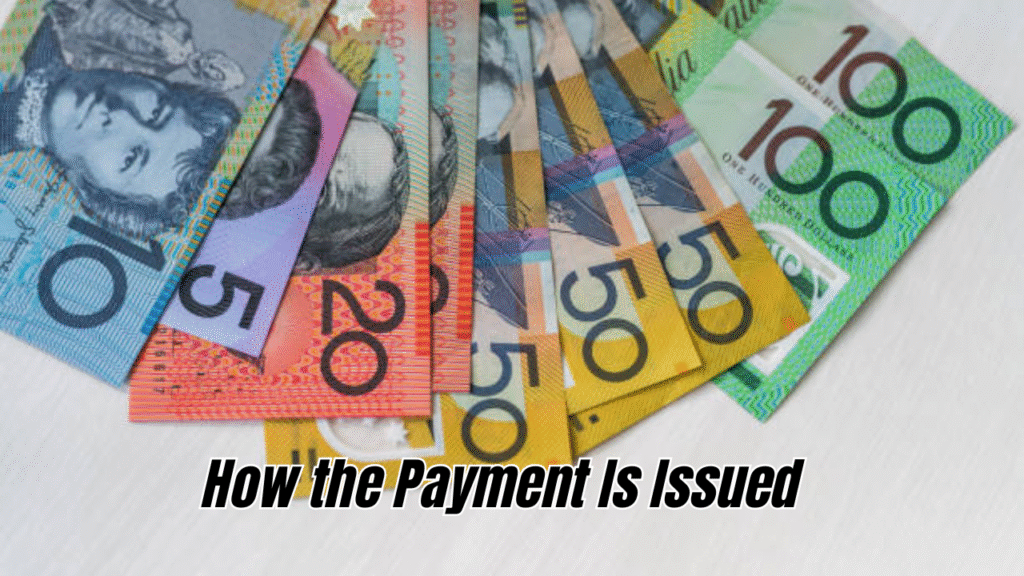Introduction
The Australian Government, through Centrelink, administers a wide range of financial support programs to assist eligible individuals and families with essential living costs. In 2025, a new one-off $3,000 Centrelink payment has been announced to help Australians facing financial strain amid rising living costs, healthcare expenses, housing insecurity, and job market volatility.
This support payment is not just another welfare handout—it is a targeted economic intervention designed to cushion vulnerable citizens against economic pressures. This article offers a detailed breakdown of what the $3,000 Centrelink payment is, who qualifies, how to apply, payment timelines, potential documentation required, and more.
Whether you’re a pensioner, student, single parent, carer, or unemployed individual, this comprehensive guide will help you determine if you’re eligible and how to secure this financial support effectively.
1. Understanding the $3,000 Centrelink Payment
What is the $3,000 Payment?
The $3,000 payment is a special one-off financial assistance grant distributed via Centrelink. It is designed to offer relief to Australians who are:
- Experiencing extreme financial hardship
- Caring for a dependent or disabled family member
- Managing housing instability
- Recently unemployed or underemployed
- Receiving other Centrelink payments but still below the poverty line
The $3,000 may also apply to individuals affected by natural disasters, domestic violence, or serious medical conditions without adequate insurance.
2. Why This Payment Was Introduced
The announcement of the $3,000 Centrelink payment in 2025 follows national reports indicating:
- A rise in homelessness among youth and older Australians
- A 40% increase in emergency welfare requests
- Inadequate minimum payments in the context of rising rents and fuel prices
- The compounding effects of inflation on fixed-income households
The government’s aim is twofold:
- Short-term relief for eligible recipients
- Long-term financial resilience through restructured Centrelink support

3. Who Is Eligible for the $3,000 Centrelink Payment?
Not all Australians will qualify. The criteria are strict but inclusive of several vulnerable categories.
Eligibility Requirements
| Category | Conditions |
|---|---|
| Age | Must be 18 or older (exceptions for youth under certain programs) |
| Residency | Must be an Australian citizen, permanent resident, or hold a protected special visa |
| Centrelink Recipient | Must already receive or be eligible for: JobSeeker, Youth Allowance, DSP, Carer Payment, or Family Tax Benefit |
| Income Test | Must fall under the low-income threshold defined by Services Australia |
| Crisis-Related | Must prove financial hardship due to recent events: job loss, eviction, illness, or disaster |
| Assets Test | Assets must be under limits unless exceptional circumstances apply |
4. Eligible Centrelink Payments That May Qualify You
If you already receive one or more of the following, you may be pre-qualified:
- Age Pension
- Disability Support Pension (DSP)
- Carer Payment or Carer Allowance
- JobSeeker Payment
- Youth Allowance (for students or job seekers)
- Parenting Payment
- Abstudy
- Family Tax Benefit Part A or B
- Special Benefit
- Widow Allowance
- Crisis Payment
5. Application Process: Step-by-Step Guide
Step 1: Confirm Eligibility
Use the Centrelink eligibility checker via your MyGov account.
Step 2: Gather Documentation
Prepare:
- Proof of identity
- Income statements or payslips
- Housing or rent agreements
- Medical certificates (if applicable)
- Statements proving crisis (termination letters, police reports, etc.)
Step 3: Apply Online or In-Person
Apply through:
- MyGov portal
- Centrelink mobile app
- Services Australia office
Step 4: Submit Additional Evidence
In some cases, Centrelink may request further details or interviews to verify claims.
Step 5: Wait for Assessment
A decision is generally made within 7–28 days. You’ll receive notification via MyGov and text message.
6. Situations That Qualify as ‘Financial Crisis’
Centrelink defines a financial crisis as any situation where a person cannot meet their basic needs. Situations include:
- Natural disasters (floods, fires)
- Sudden job loss or redundancy
- Eviction or foreclosure
- Fleeing domestic violence
- Medical emergencies
- Family breakdown
- Homelessness
7. Table: Who Qualifies and Why
| Eligible Group | Reason for Eligibility | Additional Requirements |
|---|---|---|
| Single Parent | Low-income, high expenses | Must be receiving Parenting Payment |
| Aged Pensioner | Fixed income, inflation pressure | Must meet assets test |
| Disability Support Recipient | Medical vulnerability | Provide current medical certification |
| Carer | Dependent responsibility | Carer Payment or Allowance in place |
| Homeless Individual | Emergency need | Must prove lack of stable accommodation |
| Victim of Domestic Violence | Safety and resettlement | Police or shelter documentation |
| Student | Low income and educational costs | Must receive Youth Allowance or Abstudy |

8. How the Payment Is Issued
- One-off lump sum of $3,000
- Paid via direct deposit to your nominated bank account
- Notification sent through MyGov messages and SMS
- Tax-free and does not affect other benefit rates
9. Timeline for Payment
| Stage | Estimated Time |
|---|---|
| Application Submission | Day 0 |
| Acknowledgment | Within 5 working days |
| Evidence Review | 7–14 days |
| Decision | Up to 28 days |
| Payment Disbursal | Within 5 working days of approval |
10. What to Do If Your Application Is Denied
Appeal Options:
- Request a Review within 13 weeks of the decision
- Submit additional documentation
- Apply to the Administrative Appeals Tribunal (AAT) if unsatisfied
- Contact legal or welfare advocacy groups
11. Risks and Precautions
Avoid These Common Mistakes:
| Mistake | Outcome |
|---|---|
| Incomplete application | Processing delays |
| False statements | Fraud charges |
| Missed document uploads | Rejection |
| Unreported changes | Overpayment and future debt |
12. Impact on Other Payments
The $3,000 payment:
- Does not reduce your current Centrelink benefits
- Does not count as income
- Won’t affect your tax return
- Will appear as a one-time support grant on your Centrelink record
13. How to Use the $3,000 Wisely
Consider using this support to:
- Pay outstanding utility bills
- Cover bond and rent
- Purchase essential furniture or white goods
- Secure mental health or medical services
- Enroll in training or education programs
- Settle childcare fees
14. Real-Life Case Studies
Case 1: Claire, Single Mother of Two
- Recently laid off from her job
- Receives Parenting Payment
- Faced eviction
- Approved for $3,000 after providing termination and lease letters
Case 2: Tony, Disability Pensioner
- Needed to relocate after home was flooded
- Receives DSP
- Applied through MyGov with help from a community worker
- Got payment in 21 days
15. Programs That May Combine With This Payment
- Rent Assistance
- Energy Supplement
- Health Care Card
- School Kids Bonus (state-specific)
- Medicare Safety Net threshold
Combining multiple supports ensures financial security beyond one-time relief.
16. Role of Community Services
You can seek assistance from:
- Salvation Army
- Mission Australia
- Anglicare
- Centrelink Social Workers
- Legal Aid & Community Law Centres
These services can:
- Help with applications
- Offer financial counseling
- Advocate for you in appeals
17. Warning About Scams
Due to high interest in one-off payments, scammers may pose as government officials. Remember:
- Centrelink will never ask for passwords
- Official communication is via MyGov only
- Never share MyGov login with third parties
Conclusion
The $3,000 Centrelink payment in 2025 offers a critical lifeline for Australians facing sudden financial challenges. Whether you’re a pensioner battling high rent, a carer navigating emotional stress, or a parent seeking to stabilize your home, this support exists to lift you out of crisis.
By understanding eligibility, completing the application accurately, and providing strong supporting evidence, you can secure this essential payment quickly and with minimal stress.
Take action today. Check your eligibility, prepare your documents, and submit your application. Financial stability may be just one step away.
FAQs
1. Is the $3,000 Centrelink payment automatic?
No. You must apply for it. Even if you’re a Centrelink recipient, you’ll need to demonstrate financial hardship or crisis.
2. Can I receive this payment if I’m employed?
Possibly. If your income is low and you’re experiencing a qualifying crisis, you may still be eligible.
3. How many times can I claim the $3,000 payment?
This is a one-off payment. In exceptional cases, Centrelink may review repeated crisis applications under other programs.
4. Will this affect my regular benefits?
No. This payment is non-taxable and does not impact other Centrelink payments.
5. Where can I get help applying?
Visit Services Australia, Centrelink offices, or seek help from community services such as Salvos, Anglicare, or Citizens Advice.


